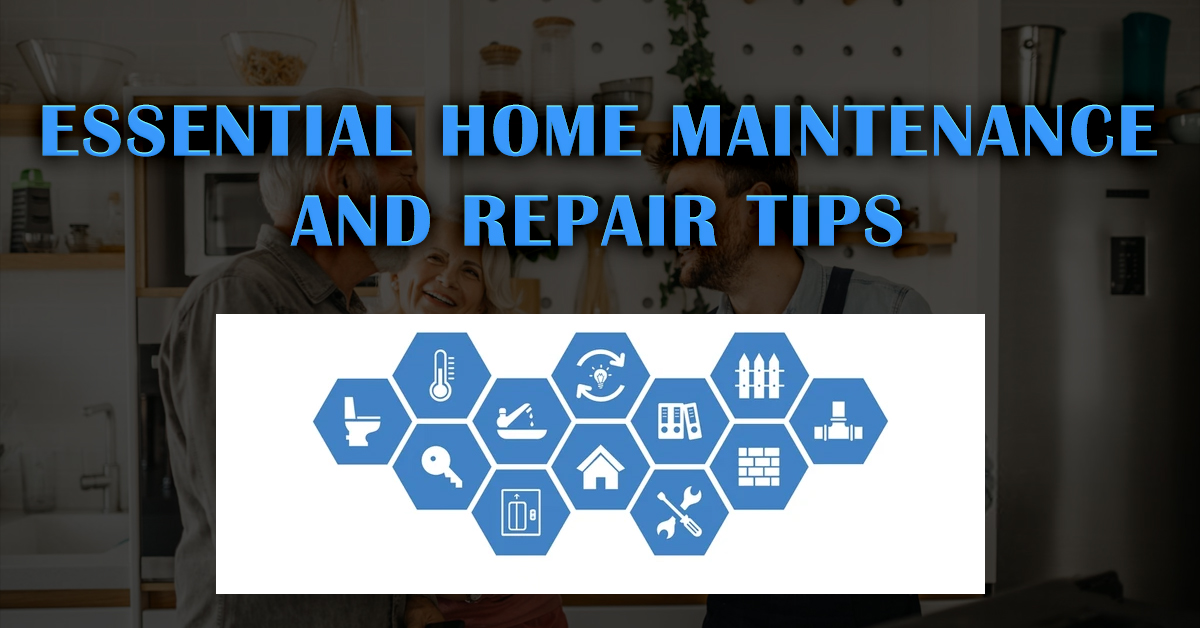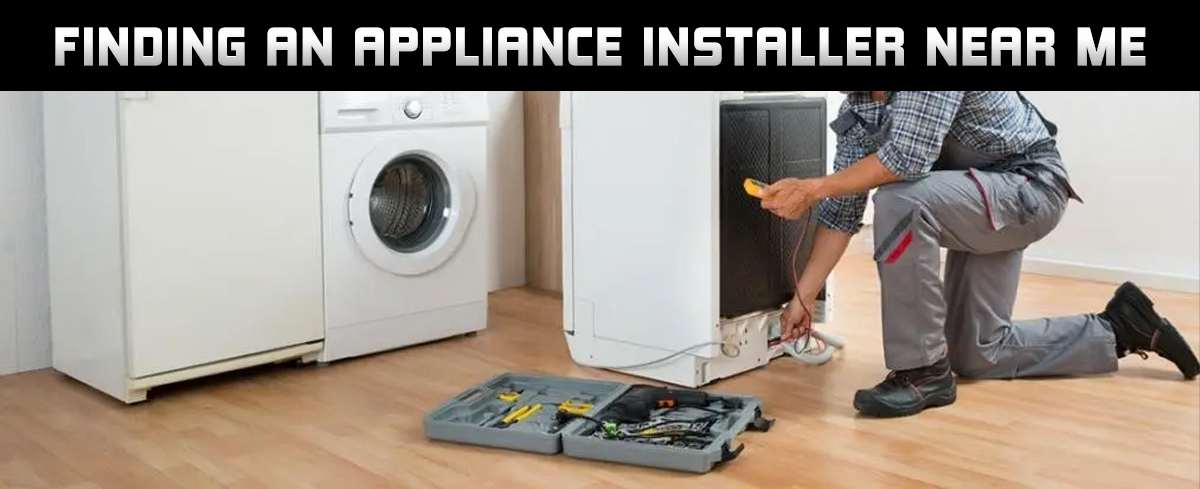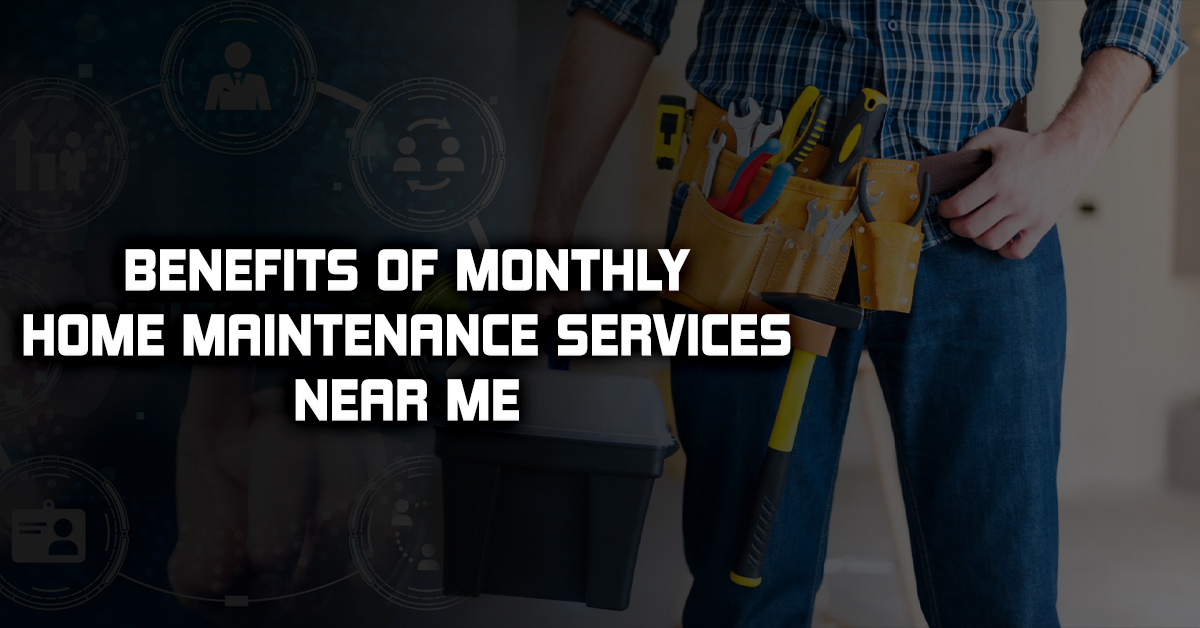Essential Home Maintenance Fundamentals
Taking care of your home is crucial for its longevity and your comfort. Key areas to focus on include regular cleaning, safety devices, and your heating and cooling systems.

Regular Cleaning and Inspection
Why Regular Inspections Matter
Keeping your home clean and performing regular inspections can prevent costly repairs. Start with simple tasks such as cleaning gutters to avoid water damage.
Inspect your roof for loose or missing shingles that could lead to leaks. Additionally, check windows and doors to ensure proper sealing, which helps conserve energy and maintain indoor comfort.
Regular checks allow you to spot issues early and solve them before they escalate. This proactive approach saves time, money, and hassle in the long run.
Home Safety Devices
Ensure Safety in Your Home
Safety devices are essential for protecting your home and family. Install smoke detectors in key areas and test them monthly to ensure they work properly. If you have gas appliances, a carbon monoxide detector is a must-have.
Maintenance Tips:
- Test devices monthly to ensure functionality.
- Change batteries at least once a year.
- Keep a home maintenance checklist with reminders for regular checks.
Regular checks of these safety devices can help prevent household hazards and keep your family safe from easily avoidable dangers.
Heating and Cooling Systems
Maintaining Year-Round Comfort
Your heating and cooling system is vital for maintaining a comfortable indoor environment. Regular maintenance tasks can prevent breakdowns, lower energy costs, and extend the lifespan of your system.
Key Maintenance Tips:
- Check and replace HVAC filters every 1-3 months to improve air quality and efficiency.
- Clean or replace furnace filters regularly to ensure smooth operation.
- Schedule annual professional maintenance to address any underlying issues.
Performing these simple tasks ensures your system runs efficiently, especially during peak seasons when you rely on it the most.
Exterior Home Maintenance
Proper care of your home’s exterior can prevent costly repairs and keep everything looking great. Focus on your roof and gutters to stop leaks and water damage. Regular lawn and landscaping tasks create a neat and appealing outdoor space. Pay attention to seasonal upkeep to maintain the home’s exterior through all weather conditions.
Roof and Gutter Care
Regular roof checks are essential. Look for any damage or missing shingles. Fix these promptly to avoid leaks. Clean your gutters and downspouts to ensure proper drainage and prevent water damage. Leaves and debris can clog gutters, leading to overflow and ice dams in winter. These issues can cause serious damage if not addressed.
Keeping gutters clean helps manage rainwater effectively. Ensure downspouts direct water away from your foundation. This reduces the risk of basement flooding. Inspect roof flashing around chimneys and vents. Make necessary repairs to maintain a watertight seal. By taking these steps, you can protect your home against moisture problems.
Landscaping and Lawn Maintenance
The appearance of your yard adds curb appeal. Keep your lawn healthy by mowing regularly and watering appropriately. Fertilizing in spring gives the grass nutrients for growth. In fall, remove leaves to prevent suffocating the lawn. Trim trees and bushes to prevent broken branches from damaging your home or power lines during storms.
Maintain flowerbeds by removing weeds and adding fresh mulch. This not only looks good but also helps retain soil moisture. Consider planting native plants that require less water and care. A well-kept landscape enhances your property’s aesthetics and prevents problems like pests or overgrown roots affecting your home’s structure.
Seasonal Exterior Upkeep
Each season brings specific chores. Spring is the time to check for winter damage; inspect for cracked siding or chipped paint and repair as needed. Prepare your home for summer by maintaining decks and patios. Summer focuses on maintaining outdoor spaces like lawns and gardens.
In fall, clean gutters and downspouts, and drain outdoor faucets to avoid burst pipes in winter. Winter requires insulating exposed pipes and protecting roofs from ice dam formation. A proactive approach to seasonal maintenance ensures your home withstands different weather conditions, keeping it in top condition year-round.
Interior Checks and Repairs
Regular interior maintenance keeps your home in good condition and helps prevent costly repairs. Attention to walls, plumbing, electrical systems, and appliances is essential to ensure everything works smoothly.
Walls, Floors, and Ceilings
Key Maintenance Tips
Keep an eye on the walls for any signs of water damage or wood rot. Small cracks might seem harmless, but they can grow over time and cause significant issues. Repair cracks promptly and recaulk where necessary to prevent moisture from seeping in.
Floors:
Check for uneven areas or loose tiles. Regular cleaning helps prevent small problems from escalating into costly repairs.
Ceilings:
Ensure that ceiling fans are securely mounted and functioning smoothly. Dust and dirt can interfere with their operation and efficiency, so regular cleaning is essential.
Plumbing and Electrical Systems
Plumbing Maintenance
Inspect faucets regularly, and replace them if leaks persist. Clean the faucet aerator to maintain proper water flow. Inspect pipes for leaks or corrosion. Early detection of plumbing issues can prevent expensive repairs down the line.
Electrical Systems
Electrical systems also require regular attention. Test safety devices such as carbon monoxide detectors and smoke alarms to ensure they are operational. Replace or fix faulty wiring before it becomes a safety hazard. Regular inspections and maintenance can help prevent dangerous situations.
Appliances and Fixtures
Ensure your appliances and fixtures operate correctly. Regularly clean the garbage disposal and check it for any obstructions. This can help avoid unpleasant smells and clogs. Inspect and clean exhaust fans in bathrooms to improve air circulation and prevent mold growth.
Check window screens for tears and repair or replace them when needed to keep out bugs while allowing fresh air in. Consistent upkeep of these elements can enhance your home’s comfort and efficiency.
Home Efficiency and Performance
Enhancing your home’s efficiency involves making energy-saving and water-conserving practices a routine. By adopting these measures, you can significantly reduce utility bills and contribute positively to the environment.
Energy-Saving Measures
Boost Your Home’s Energy Efficiency
Enhancing energy efficiency in your home doesn’t have to be complicated. Simple steps can make a significant difference:
- HVAC Maintenance: Change air filters regularly and seal ducts to improve system performance and lower energy consumption.
- Energy-Efficient Lighting: Replace traditional bulbs with LED bulbs, which use less electricity and last longer.
- Insulation Checks: Inspect walls and attics for proper insulation to prevent air leaks and maintain indoor temperatures.
- Smart Thermostats: Optimize heating and cooling schedules to match your lifestyle for maximum efficiency.
- Unplug Electronics: Reduce phantom energy use by unplugging devices when not in use.
These small changes can lead to big savings on your energy bills while reducing your carbon footprint.
Water Conservation Practices
Practical Ways to Save Water
Conserving water benefits both your wallet and the environment. Here’s how you can make a difference:
- Fix Leaks: Repair dripping faucets to save gallons of water daily.
- Low-Flow Fixtures: Install water-saving showerheads and toilets to reduce usage without compromising performance.
- Water Softeners: Use a water softener to extend the life and efficiency of your appliances.
- Rainwater Collection: Harvest rainwater for gardening to reduce dependence on municipal water.
- Mindful Usage: Run dishwashers and washing machines only when full.
- Seasonal Maintenance: Check irrigation systems and adjust schedules based on rainfall to avoid overwatering.
By implementing these practices, you can preserve an essential resource while ensuring efficiency in your home.
Preventative Measures and Enhancements
Making sure your home is well-maintained means focusing on its structure and improvements. These actions help keep your house safe and boost its worth. Regular checks and small fixes stop bigger issues and keep things like your driveway or plumbing working well. Updating features such as doors and windows can also raise the value of your home.
Structural Integrity
Keeping your home’s structure sound is vital. Start with regular inspections, especially of the foundation, to catch problems like cracks early. Small foundation issues can lead to major repairs if left unchecked.
Also, watch for water damage, which might show up as stains on walls or ceilings. Regular inspections help keep your home safe and avoid expensive repairs.
Maintaining sidewalks and driveways can help prevent cracks from becoming tripping hazards. Seal these areas to protect them from weather damage. Small maintenance tasks can save money and effort long-term, keeping your home safe and functional.
Home Value Improvement
Improving your home not only enhances comfort but also increases its market value. Adding energy-efficient storm doors is a good start. These help maintain home temperature, saving energy. Also, a well-kept yard with a working irrigation system boosts curb appeal.
Renovate kitchens and bathrooms to increase overall resale value. Simple upgrades like new cabinets or fresh paint can make a significant difference. Updating windows to energy-efficient models also adds value, appealing to future buyers looking for cost-effective options.
Remember, smart improvements can offer great returns when it’s time to sell. Regularly maintaining and upgrading your home ensures it remains an asset for years to come.
Frequently Asked Questions
1. What are the critical home maintenance tasks that should be performed seasonally?
Check your roof for loose shingles, clean window and door screens, and inspect the home’s siding. Ensure you mend any driveway cracks and touch up paint on exterior surfaces. In summer, maintain your lawn and inspect decks or patios.
2. How can homeowners create a comprehensive checklist for routine home maintenance?
List tasks by season, such as cleaning ducts in the fall or checking air conditioning systems in the spring. Use a calendar or app to track these tasks. This helps keep everything organized and ensures nothing is overlooked.
3. What are the best practices for scheduling and tracking regular home maintenance?
Break tasks into monthly or seasonal checklists, and set reminders using digital tools or calendars. Keeping a log of completed work can help you track patterns, plan ahead, and avoid unexpected problems.
4. What are some common home repairs that homeowners should know how to address?
Learn to fix leaky faucets, unclog drains, and repair drywall. Simple fixes like changing air filters or tightening loose door handles can also save you time and money. Knowledge of basic plumbing and electrical can be beneficial.
5. How can homeowners ensure their home maintenance efforts are cost-effective?
Use energy-efficient appliances and materials when possible, and perform regular checks to prevent major repairs later. Investing in quality tools can reduce costs by enabling do-it-yourself repairs.
6. Which professional home maintenance services are essential to engage with periodically?
Consider hiring professionals to inspect your roofing and plumbing systems annually. An HVAC specialist should check your heating and cooling systems bi-annually. Tree trimming services can also help prevent potential damage from branches.



